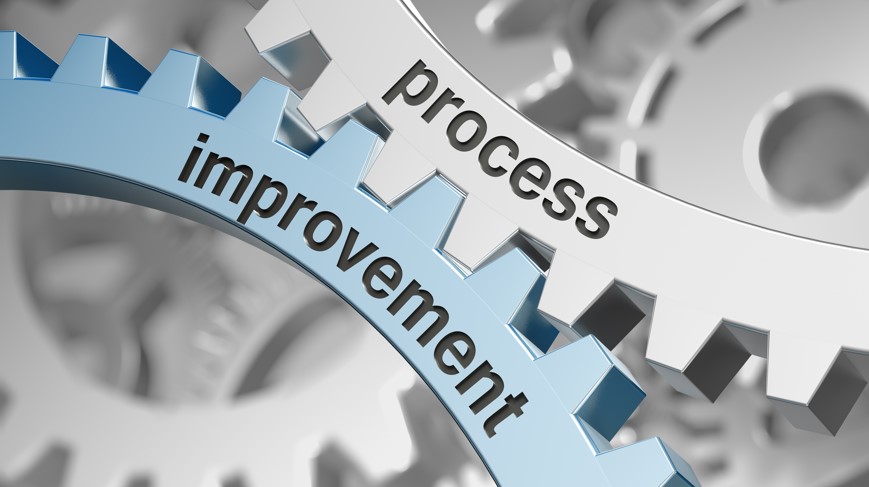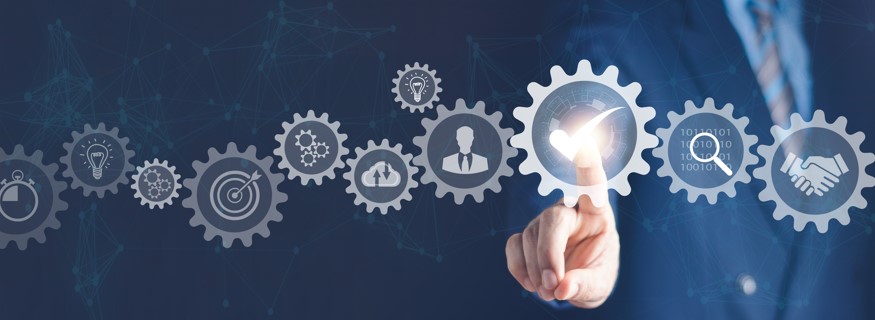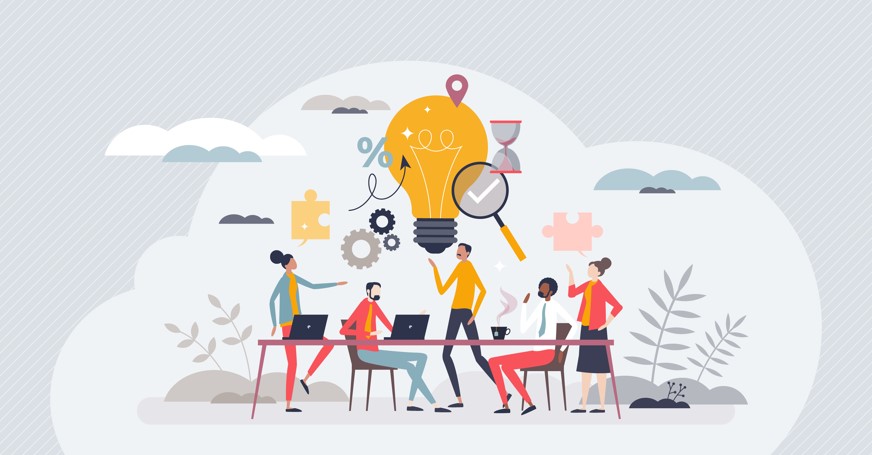
Business processes include multiple steps that one can complete in multiple ways. Each company has its own best practices and procedures that contribute to completing a task, project, and, eventually, an entire workflow. However, as efficient as these processes are, there’s always room for improvement. Indeed, according to such theories as Lean or Six Sigma, continuous improvement is the key to competitiveness.
Here’s where the idea of business process improvement (BPI) comes in. Essentially, BPI is the practice of implementing positive changes in business processes to enhance their efficiency and efficacy. The objective here is to continuously improve business processes to reach business goals faster and more efficiently. These goals can range from improving product or service quality to enhancing customer satisfaction and employee engagement.
But what are some examples of how organizations implement continuous process improvement within their operations?
Business Process Improvement Examples
Companies can implement process improvement efforts through multiple applications. The most significant examples include:
- process automation,
- implementing the culture of continuous improvement (Kaizen),
- streamlining communication and collaboration,
- speeding up onboarding processes,
- reducing paperwork through digital tools,
- enhancing workflow visibility and transparency,
- eliminating waste.
Let’s discuss these process improvement examples in more detail.
Automation of Business Processes

Automation is the process of using technology to optimize and streamline business processes. It can improve efficiency, accuracy, and speed in areas such as customer service, product delivery, financial transactions, and data processing.
Automated workflows can provide multiple significant benefits for businesses of all sizes. For example, automation software can be used to quickly populate data fields with accurate information instead of manually entering it into the system.
Additionally, automated systems can digitize and automate customer service inquiries so that customers receive timely responses without waiting on hold or waiting for an email response from customer service representatives.
Automation not only makes the job easier and improves customer service experience but also heightens accuracy by reducing human error. For instance, automation can track orders through each stage of production and alert staff when there are exceptions, errors or delays in order fulfilment. That way, organizations can eliminate redundancies while increasing the efficiency of processes and the quality of their services or products.
All these can be achieved using HighGear’s workflow automation software. Using our no-code platform, businesses can design, automate, and manage workflows, leading to streamlined processes, cost reduction, and enhanced customer satisfaction.
Implementing a Culture of Continuous Improvement (Kaizen)
What many organizations seem to forget is that process improvement isn’t a one-time affair. It’s a continuous process that requires constant optimizations and monitoring to serve its purpose. That is where creating a Kaizen culture within your company is essential to maximize your business improvement efforts.
Kaizen is a Japanese term meaning “change for the better” It refers to continuous improvement within an organization by making small changes that add up over time.
Kaizen encourages teams to come together and brainstorm solutions that can improve existing processes or create new ones entirely. The concept encourages collaboration between departments and allows teams to come up with creative solutions.
By encouraging your employees to make small but continuous changes, you promote an atmosphere of learning and improvement that helps them stay engaged and motivated to reach the company’s objectives.
Improving Communication and Collaboration

Establishing effective communication between departments is essential for achieving successful process improvements. Communication should be clear and concise so everyone involved understands what needs to be done, when it needs to be done, who it needs to go through, etc.
Collaboration between departments is key for everyone involved in process improvement to ensure the entire team is orchestrated in achieving a common goal. When departments collaborate effectively, they can more quickly identify areas where improvements can be made than if each department was working independently.
The need for better communication and collaboration has never been more apparent than in this era of remote working. With teams needing to rely more on technology and digital tools, workflow automation platforms – such as HighGear – can facilitate better communication, improve collaboration and create better orchestration of work across multiple communication channels.
Using a centralized platform for staying up-to-date on the progress of work, visibility into an entire process improvement effort is made possible – from start to finish.
Speeding Up the Onboarding Process
Onboarding new employees can be a lengthy process if it isn’t done correctly. One way to speed up the onboarding process is by creating a standardized set of documents that all new hires must complete before they start working.
This includes things like filling out paperwork, understanding company policies and procedures, learning the company’s technology systems, etc.
With a standardized onboarding system in place, companies can ensure that new hires hit the ground running when they start working instead of spending valuable time trying to catch up on tasks they should have already completed during onboarding. It also minimizes data entry errors, ensuring there are no delays when onboarding a new employee.
Utilizing HighGear’s enterprise-level platform makes it easy to deliver a consistent and streamlined onboarding experience. Your new hires can access all of the necessary forms, documents, and resources in one convenient location – saving time for everyone involved.
Of course, HighGear’s business process management platform doesn’t just standardize the employee onboarding process. You can create templates for standardizing processes across all departments and teams, minimizing data errors and streamlining documentation processes.
Reducing Paperwork Through Digital Solutions
Managing paperwork can take up valuable time and resources that could be better spent elsewhere in an organization. To reduce paper through digital solutions, look into software solutions that automate specific paper-based tasks such as vendor onboarding or complex request-for-quote activities.
Businesses could also take advantage of a paperless approach by using digital rules-based routing and digital signatures, enabling them to obtain signatures without having to print out documents for physical signing purposes.
Less paperwork also means more efficient document management, as employees and managers can find the necessary information faster, allowing them to finish tasks and project faster.
Improving Process Visibility and Transparency
Having visibility into a process is critical for identifying areas for improvement. Teams can rapidly pinpoint these areas that require improvement or are creating delays with tools that provide transparency into each phase of a process.
Let’s take an example of a financial services company struggling to keep track of regulatory compliance. By implementing a compliance management system that provides real-time visibility into activities and reporting, they can identify and address non-compliance issues more effectively—as a result, reducing risk and improving overall regulatory compliance. By using the right digital platform, organizations can also stand “audit-ready,” thereby eliminating business disruption and lengthy audit inquiries.
HighGear’s platform ensures companies have the visibility they require to remain on top of every stage in a process, offering real-time updates, audit ability and tracking progress along the way. HighGear’s business users take advantage of process visualization technology, providing them with more straightforward and efficient process-building and management tools.
Eliminate Waste
Waste can be both physical and digital in nature. Physical waste includes excess inventory or materials that can be used more effectively, while digital waste includes things like redundant data entry tasks or inefficient software programs.
By identifying areas where waste occurs and addressing them through process improvement strategies such as automation or streamlining existing processes, businesses can save money by reducing the amount of wasted time and resources.
For example, a company may realize that a lot of time is spent manually entering customer information into their database when they could automate it through software integration instead. Eliminating waste also means a more efficient resource allocation, allowing key departments to grow and work more effectively.
Final Thoughts
Continuous process improvement is the key to achieving a competitive edge over competitors, especially given how fast-paced and competitive the current business environment has become. Furthermore, process improvement is an ongoing process that requires commitment and dedication to achieve the desired results.
There are numerous process improvement techniques businesses can apply, some of which we have discussed here today. However, the most important of them has to be workflow automation. And that can only be achieved through an effective and reliable workflow management platform. And when looking for one, there are few that can match HighGear.
With HighGear, businesses can easily identify areas for improvement and make changes quickly to keep ahead of the curve. Using tools like workflow visualization, custom notifications, or permissions, without requiring coding or IT knowledge, allows business users to effortlessly design, automate, and manage custom workflows, ensuring ongoing business process improvements.
Request a demo today and discover how our platform can enhance your business operations. Or, if you want to learn more about HighGear, schedule a consultation. Either way, we look forward to sharing how multiple businesses from all kinds of industries have shifted their businesses to a higher gear.
